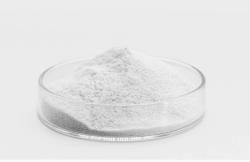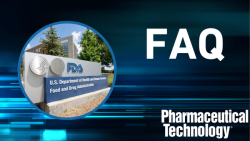
OR WAIT null SECS
- About Us
- Advertise
- Contact Us
- Editorial Info
- Editorial Advisory Board
- Do Not Sell My Personal Information
- Privacy Policy
- Terms and Conditions
© 2025 MJH Life Sciences™ , Pharmaceutical Technology - Pharma News and Development Insights. All rights reserved.
N-Nitrosamine Impurities and FDA’s Recommendations for Acceptable Intake Limits
Josh Hoerner, general manager of Purisys, provides his perspective on FDA’s recommendations for acceptable intake limits for N-nitrosamine impurities.
Nitrosamines occurring in pharmaceuticals became a developing problem in 2018, and regulatory agencies have been working with pharmaceutical companies since to mitigate the risk of these cancer-causing chemicals in drug products (1). In January 2025, FDA posted “Determining Recommended Acceptable Intake Limits for N-nitrosamine Impurities in Pharmaceuticals: Development and Application of the Carcinogenic Potency Categorization Approach” in the Spotlight on CDER Science on the FDA.gov website (2).
Pharmaceutical Technology® spoke with Josh Hoerner, general manager of Purisys, which specializes in a small volume custom synthesis and specialized controlled substance manufacturing, to gain his perspective on FDA’s recommendations for acceptable intake limits for N-nitrosamine impurities.
PharmTech: What are nitrosamine drug substance-related impurities (NDSRIs)?
Hoerner: NDSRIs are nitrosamine impurities that share structural similarities with the API and are generally unique to each API. These impurities are considered more complex and require more sophisticated testing methods to detect and quantify. The presence of NDSRIs is considered a higher risk, especially when the impurity forms as a result of the API’s chemical structure or the processes used during production.
The advanced testing conducted to determine the presence of NDSRIs involves sophisticated and sensitive mass spectrometry (MS) technology, including Triple Quadrupole Technology, which enables liquid chromatography-tandem mass spectrometry (LC-MS/MS). A high-sensitivity, low-level quantitation technology is particularly advantageous for detecting nitrosamines and other impurities that must remain within low permissible levels (based on safety data, a comparator, or the CPCA Potency score).
PharmTech: What can you tell us about the recommendations FDA published in January 2025 for the development and application of carcinogenic potency categorization approach to nitrosamines?
Hoerner: Safety data (e.g., animal carcinogenicity data) for many potential NSDRIs or comparators are not readily available. FDA worked with the Nitrosamine International Technical Working Group (NITWG) to develop a methodology called the Carcinogenic Potency Categorization Approach (CPCA). The approach is based on a training set of 81 nitrosamines to establish five potency categories (1 high–5 low), reflecting carcinogenic risk. Essentially, the CPCA applies the knowledge that the α-hydroxylation mechanism of metabolic activation and the associated number of α-hydrogens as well as associated activating and deactivating features, drives nitrosamine potency. This allows a potency score for a potential NDSRI to be calculated along with the associated an AI to be calculated without direct safety data. Using this framework, a drug product manufacturer can then assess their drug products for NDSRIs below the [acceptable intake] and ensure patients are not exposed to levels exceeding or approaching the [acceptable intake].
PharmTech: What makes determining acceptable intake so challenging?
Hoerner: There is a lack of direct safety data on NDSRIs and comparator compounds to establish a basis for potency. Prior to the CPCA framework, one might default to higher [acceptable intake] limits such as the 1500 ng/day, whereas those with higher potency scores have higher carcinogenicity risk, and therefore, should be controlled to lower [acceptable intake] levels.
PharmTech: What can pharma manufacturers do to manage the nitrosamine risk?
Hoerner: There are two key guidelines included in the FDA-published compliance recommendations that define the framework for nitrosamine assessment and control:
- Risk assessment and control of nitrosamine formation. Manufacturers should evaluate and control two types of nitrosamine impurities:
--Small-molecule nitrosamines (structurally different from the API)
--NDSRIs, structurally similar to the API. - Acceptable daily intake limits. Risk assessments should determine if nitrosamines are likely present, followed by testing. If testing shows nitrosamine impurity is present at a level 10% above the acceptable intake limit for that specific nitrosamine, FDA recommends that manufacturers develop specifications to keep nitrosamine levels within limits.
A comprehensive approach includes an initial paper-based assessment of technical risks (e.g., chemistry, solvents, excipients), followed by testing according to USP [United States Pharmacopeia] General Chapter 1469.11. Risk ratings (low, medium, high) are assigned based on the likelihood of nitrosamine formation, with secondary amines posing the highest risk.
Manufacturers should partner with experienced CDMOs [contract development and manufacturing organizations] that offer a comprehensive solution for testing, synthesis, and risk assessment to ensure compliance with these complex requirements.
References
- FDA. FDA Statement on the FDA’s Ongoing Investigation into Valsartan and ARB Class Impurities and the Agency’s Steps to Address the Root Causes of the Safety Issues. Press Release. Jan. 25, 2019.
- FDA. Determining Recommended Acceptable Intake Limits for N-nitrosamine Impurities in Pharmaceuticals: Development and Application of the Carcinogenic Potency Categorization Approach. Spotlight on CDER Science. FDA.gov. Jan. 10, 2025.
Related Content:



